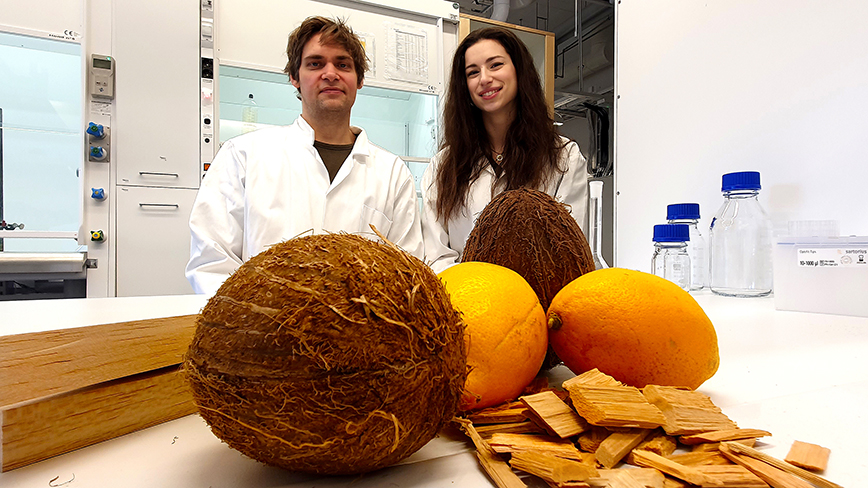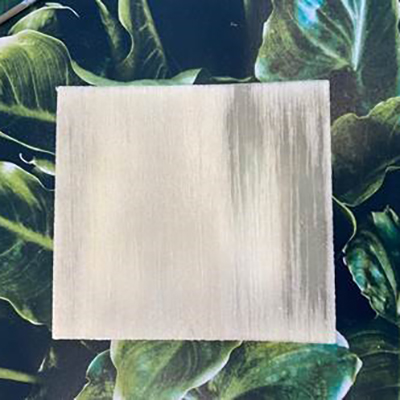i’ve had transparent wood stories here before but this time it was the lemons and coconuts which captured my attention.

From a March 30, 2023 news item on Nanowerk,
A building material that combines coconuts, lemons and modified wood could one day be enough to heat and cool your home. The three renewable sources provide the key components of a wood composite thermal battery, which was developed by researchers at KTH Royal Institute of Technology in Stockholm.
Researchers reported the development in the scientific journal, Small (“Sustainable Thermal Energy Batteries from Fully Bio-Based Transparent Wood”). Peter Olsén, researcher in the Department of Biocomposites at KTH, says the material is capable of storing both heat and cold. If used in housing construction, the researchers say that 100 kilos of the material can save about 2.5 kWh per day in heating or cooling—given an ambient temperature of 24 °C.
KTH researcher Céline Montanari says that besides sunlight, any heat source can charge the battery. “The key is that the temperature fluctuates around the transition temperature, 24 °C, which can of course be tailored depending on the application and location,” she says.
…
A March 30, 2023 KTH Royal Institute of Technology press release, which originated the news item, describes the roles that lemons and coconuts play,
The process starts with removing lignin from wood, which creates open pores in the wood cells walls, and removes color. Later the wood structure is filled with a citrus-based molecule—limonene acrylate—and coconut based molecule. Limonene acrylate transforms into a bio-based polymer when heated, restoring the wood’s strength and allowing light to permeate. When this happens the coconut molecule are trapped within the material, enabling the storage and release of energy.
“The elegance is that the coconut molecules can transition from a solid-to-liquid which absorbs energy; or from liquid-to-solid which releases energy, in much the same way that water freezes and melts,” Montanari says. But in the transparent wood, that transition happens at a more comfortable 24C
“Through this transition, we can heat or cool our surroundings, whichever is needed,” Olsén says
Olsén says that potential uses include exterior and interior building material for both transparency and energy saving – in exteriors and interiors. The first application of the product would be for interior spaces to regulate temperatures around the 24C mark to cool and to heat. More study is needed to develop it for exterior use.And it’s not just for homes or buildings. “Why not as a future material in greenhouses?” he says. “When the sun shines, the wood becomes transparent and stores more energy, while at night it becomes cloudy and releases the heat stored during the day. That would help reduce energy consumption for heating and at the same time provide improved growth.”

Here’s a link to and a citation for the paper,
Sustainable Thermal Energy Batteries from Fully Bio-Based Transparent Wood by Céline Montanari, Hui Chen, Matilda Lidfeldt, Josefin Gunnarsson, Peter Olsén, Lars A. Berglund. Small Online Version of Record before inclusion in an issue 2301262 DOI: https://doi.org/10.1002/smll.202301262 First published online: 27 March 2023
This paper is open access.